5 VR Games That Attract Visitors to Trade Show Booths
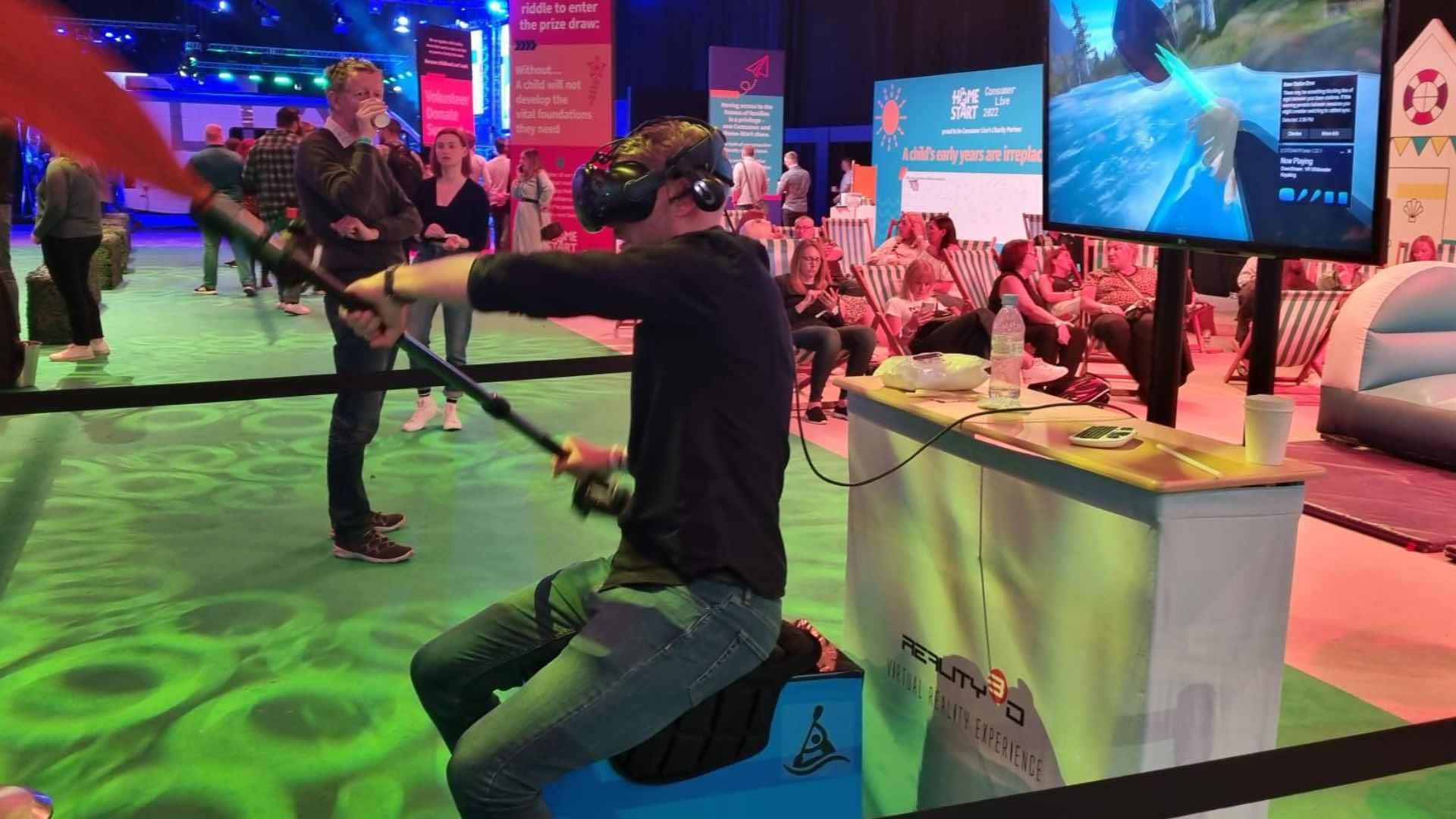
VR for events what is that? You might be thinking how it will help so just let’s say.
When a visitor walk thorugh a tradeshow. They always looking to find something which can attract their focus. Exhibitors are trying to get visitors focus using free give aways and after sometime everything feels same becuase every exhibitor doing the same thing.
Now the question is how you make your booth diffrent so people actually stop at?
That’s where AR (augmented reality) and VR (virtual reality) come in. Instead of just showing visitors what you do, you let them experience it. This allow visitors to interact with booth organically.
Imagine some one using your VR games/Simulators where they are seeing your logs inside or they scanning an object with their phone to unlock an AR puzzle linked to your product. It’s fun, it’s different, and it sticks in their memory long after the event.
In this article, I’ll share 5 AR & VR game ideas that help you vistors to stop at your booth and can convert into future leads.
5 AR & VR for Events Experiences
1. Walk The Plank VR
Walk the Plank VR is a short but thrilling virtual reality experience where players wear a VR headset and find themselves standing on top of a tall skyscraper. The main challenge? Walking out onto a narrow wooden plank suspended hundreds of feet in the air.
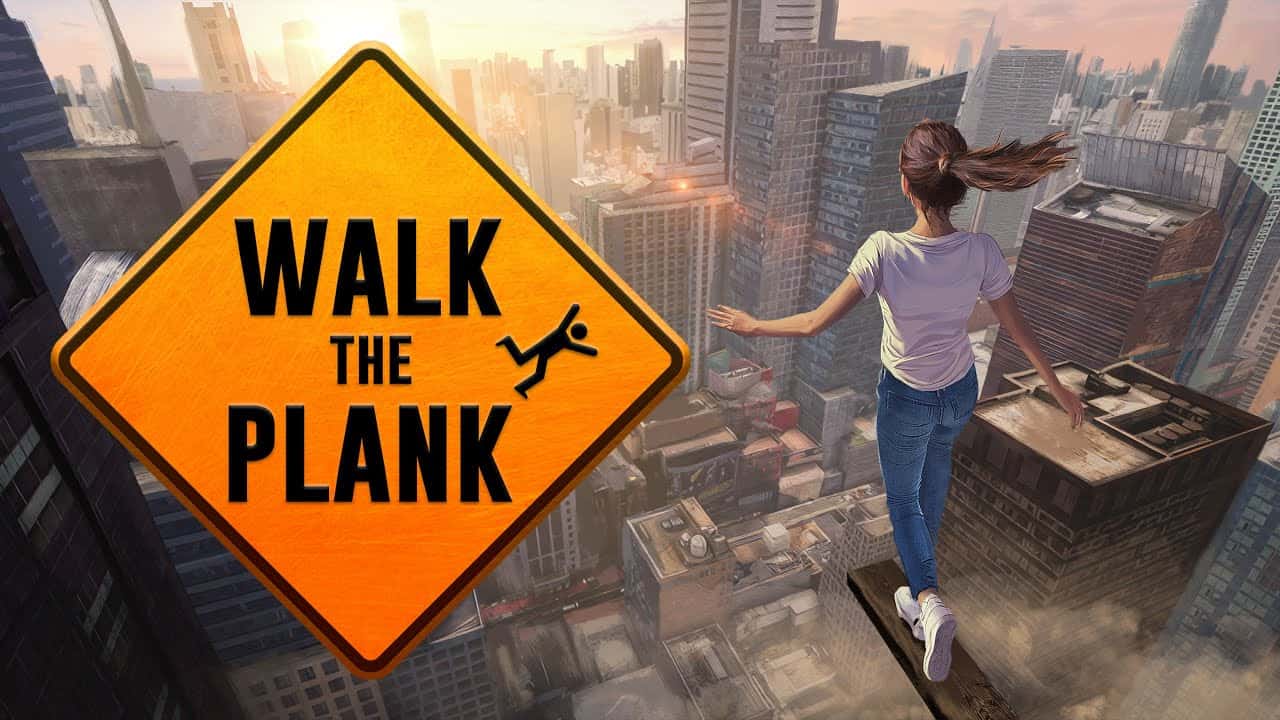
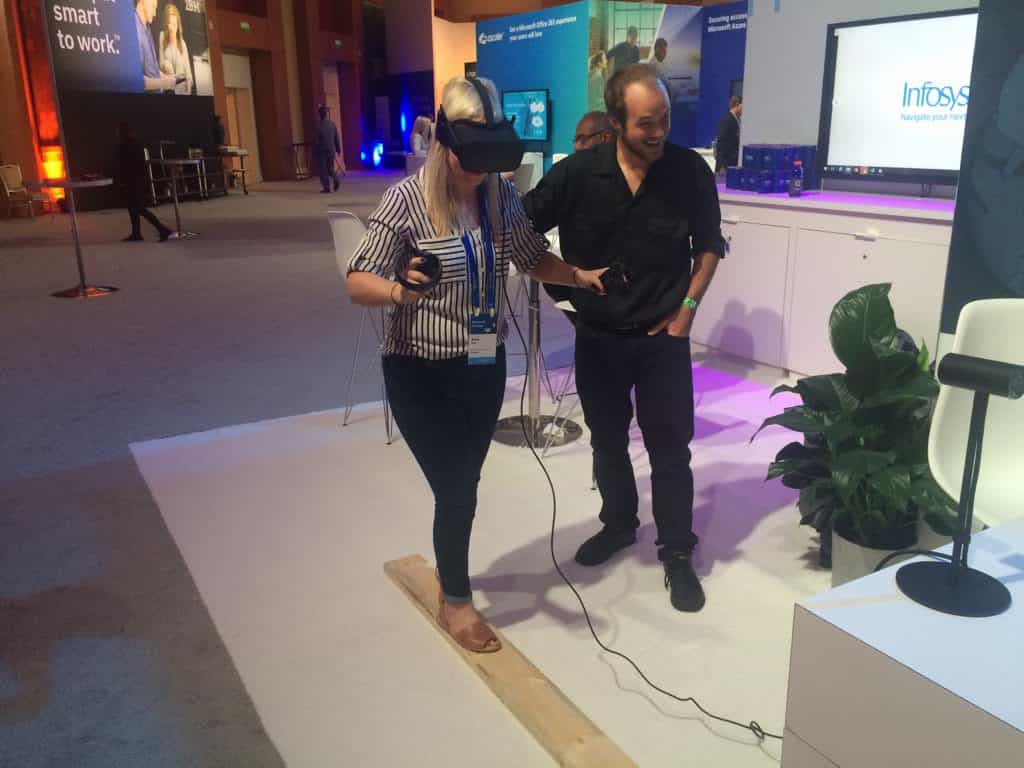
Why it works at trade shows:
Instant thrill: The sense of height feels so real that even the bravest people hesitate to step forward. This creates drama and curiosity, which naturally attracts crowds.
Perfect for short plays: Each session lasts only 1–2 minutes, so it works well for booths with heavy traffic.
Highly shareable: Onlookers love watching others wobble, scream, or laugh as they “walk the plank,” making it one of the most photographed and recorded booth activities.
Custom branding: The VR skyline, plank, or even the “ground below” can be branded with logos, products, or event messaging.
2. VR Flight Sim
Walk the Plank VR is a short but thrilling virtual reality experience where players wear a VR headset and find themselves standing on top of a tall skyscraper. The main challenge? Walking out onto a narrow wooden plank suspended hundreds of feet in the air.

Why it works at trade shows:
Instant thrill: The sense of height feels so real that even the bravest people hesitate to step forward. This creates drama and curiosity, which naturally attracts crowds.
Perfect for short plays: Each session lasts only 1–2 minutes, so it works well for booths with heavy traffic.
Highly shareable: Onlookers love watching others wobble, scream, or laugh as they “walk the plank,” making it one of the most photographed and recorded booth activities.
Custom branding: The VR skyline, plank, or even the “ground below” can be branded with logos, products, or event messaging.
3. VR Beat Saber
Walk the Plank VR is a short but thrilling virtual reality experience where players wear a VR headset and find themselves standing on top of a tall skyscraper. The main challenge? Walking out onto a narrow wooden plank suspended hundreds of feet in the air.
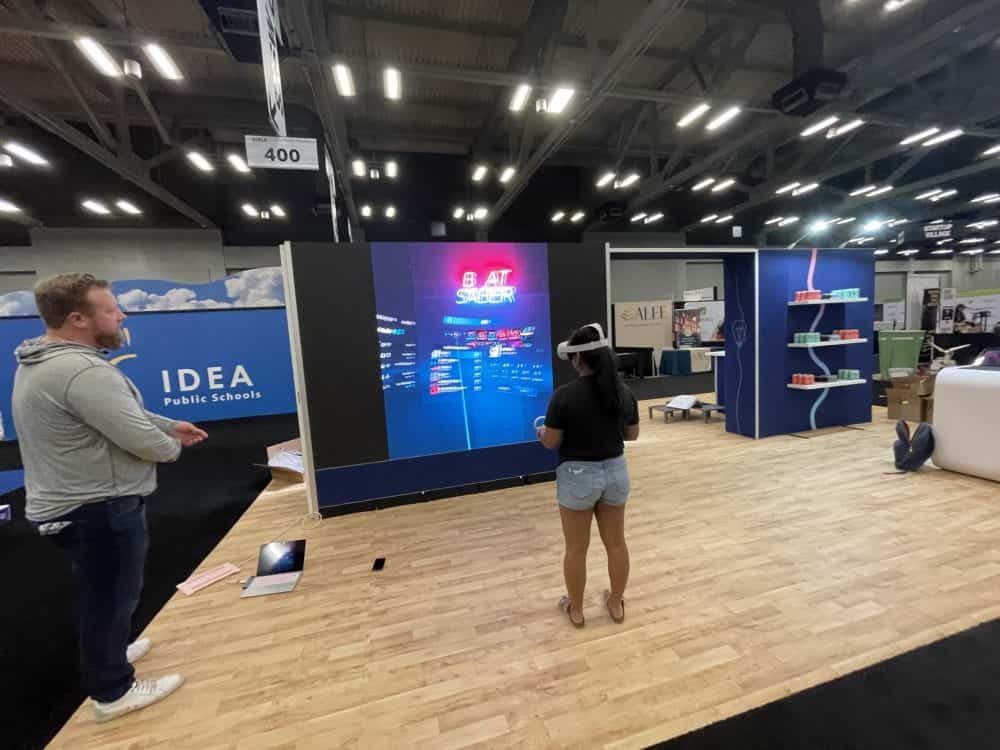
Why it works at trade shows:
Instant thrill: The sense of height feels so real that even the bravest people hesitate to step forward. This creates drama and curiosity, which naturally attracts crowds.
Perfect for short plays: Each session lasts only 1–2 minutes, so it works well for booths with heavy traffic.
Highly shareable: Onlookers love watching others wobble, scream, or laugh as they “walk the plank,” making it one of the most photographed and recorded booth activities.
Custom branding: The VR skyline, plank, or even the “ground below” can be branded with logos, products, or event messaging.
4. VR CAR Simulator
A VR Car Simulator puts visitors behind the wheel of a virtual car using a VR headset, a steering wheel, and pedals (sometimes even a racing seat). Inside the headset, they experience a realistic driving environment—racing tracks, city streets, or even custom-branded worlds.
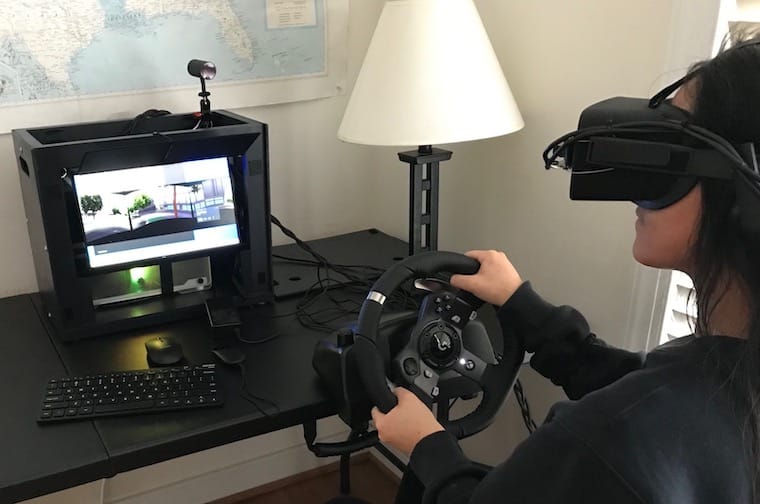
Why it works at trade shows:
High adrenaline factor: The excitement of racing or test-driving a vehicle grabs attention instantly.
Visually striking: A full racing seat setup with a big screen showing the player’s perspective draws crowds from across the hall.
Customizable experience: The track, cars, and environment can be branded—imagine your company logo on billboards along the track or even custom-designed cars.
Competitive gameplay: Leaderboards let visitors race against each other for best lap times, encouraging repeat plays.
Versatile appeal: Works for automotive companies, tech brands, or anyone wanting to tie their brand to speed, innovation, or excitement.
5. VR BaseBall
Visitors wear a VR headset and step into a virtual baseball stadium. Using motion controllers (or a bat-shaped controller), they try to hit as many pitches as possible. Each swing feels natural, and the crowd cheers as they connect with the ball.
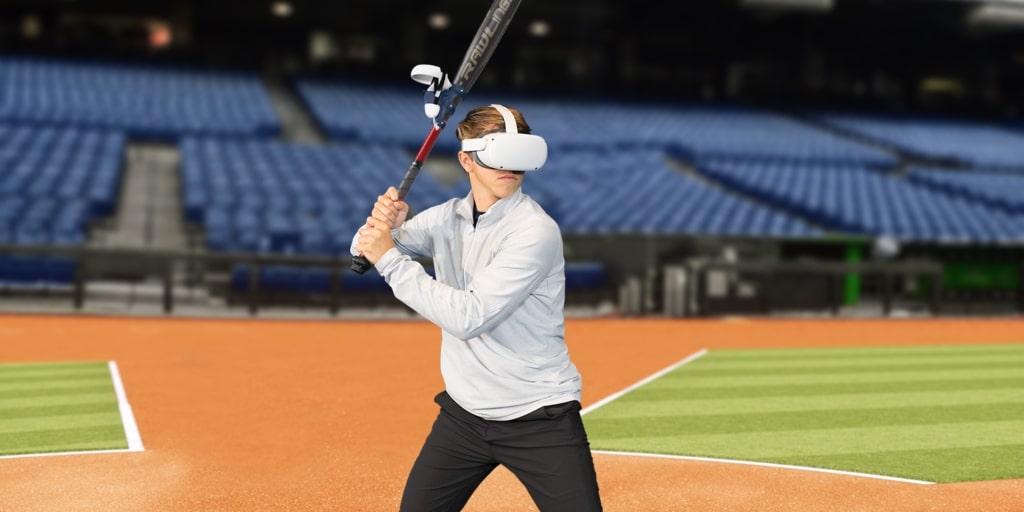
Why it works at trade shows:
High-energy fun: The excitement of swinging a bat grabs attention fast.
Spectator appeal: Watching someone try to smash home runs is entertaining and draws a crowd.
Quick playtime: Each game lasts 1–2 minutes, perfect for booth traffic flow.
Custom branding: Stadium billboards, scoreboards, and even the baseballs can be branded with your logo.
Competition factor: Add a leaderboard for longest hit or highest score, and award small prizes for top players.
Best Practices for Using AR/VR Games in Booths
Bringing AR or VR into your booth is a guaranteed crowd-puller—but the difference between a quick gimmick and a memorable experience is in the details. Here are a few best practices to get the most out of it:
Keep it short and sweet
Aim for 1–2 minutes per game. Long sessions slow down traffic and create long lines, which can frustrate visitors.Blend fun with brand storytelling
Don’t just drop people into a generic VR world. Tie the challenge, environment, or rewards back to your product or message. For example, racing past billboards with your branding or solving AR puzzles that reveal your product features.Use leaderboards and rewards
Competition is magnetic. A simple leaderboard with small prizes (like swag or gift cards) keeps people coming back and creates buzz around your booth.Make it spectator-friendly
Put a big screen outside the headset showing what the player sees. Crowds love watching reactions, and it gives onlookers a reason to line up.Think accessibility
Not everyone is a gamer. Keep controls simple and have staff nearby to guide players quickly. Also consider hygiene—sanitizing VR headsets between plays is a must.Capture leads smoothly
Ask for a quick signup (name + email) before gameplay. Keep it light, so people don’t feel like they’re filling out paperwork just to play.
Conclusion
Trade shows are all about standing out, and AR/VR games give you an edge that traditional displays just can’t match. Whether it’s the thrill of walking a plank in VR, the energy of a Beat Saber showdown, or the excitement of hitting a home run in a virtual stadium—these experiences grab attention, spark conversations, and leave people with a story they’ll remember.
The real power, though, is how you tie the fun back to your brand. A well-designed custom branded AR or VR game doesn’t just entertain—it educates, connects, and turns curious visitors into warm leads.
So if you’re planning your next event, think beyond giveaways and flashy brochures. Give people something they can play, feel, and share—and watch how quickly your booth becomes the one everyone’s talking about.
